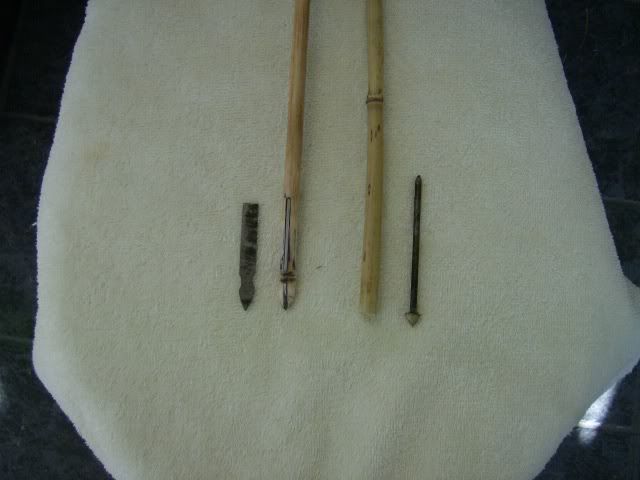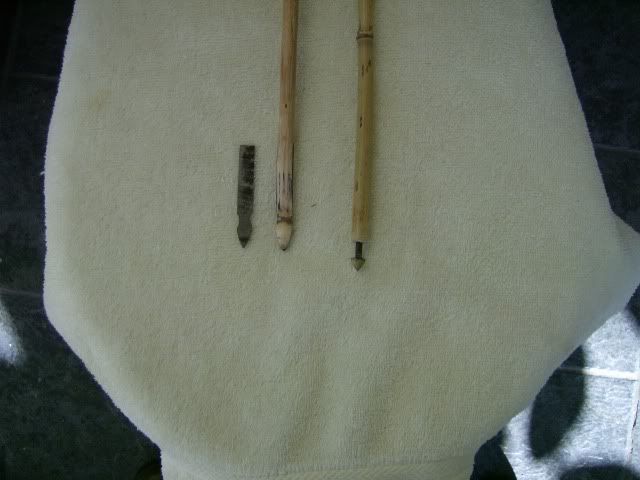Although some primitive folks used the small end for the point end, most didn't. I use the big(heavy) end for the point end. A weight-forward arrow flies better and the natural taper makes the arrow less spine sensative. You can just sharpen the heavy end or make it bulbous to use as a blunt.
This is a set of red osier Plains type arrows I made a few years ago...
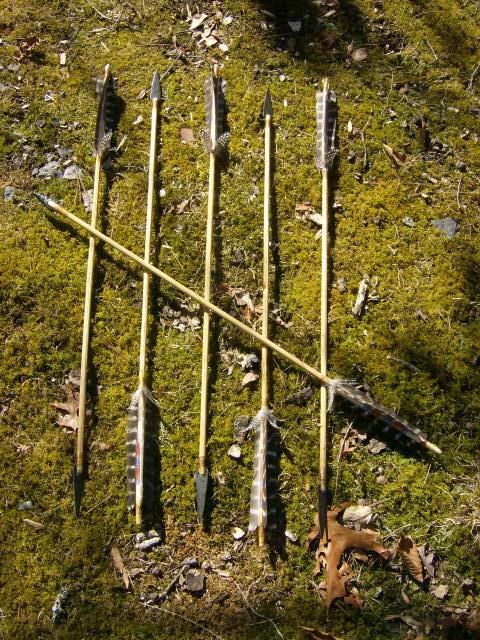
The 2 center arrows in this set are sourwood shoot arrows. The 2 outside ones are hill cane arrows. Same weight-forward set up for both materials...
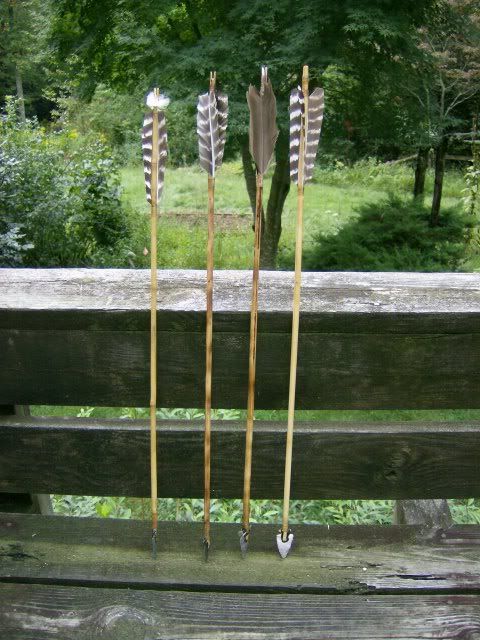
...and these are full tapered ash arrows. They were doweled shafts that bI had tapered full lengtyh to mimic the natural shafting arrows. The same principles apply here too.
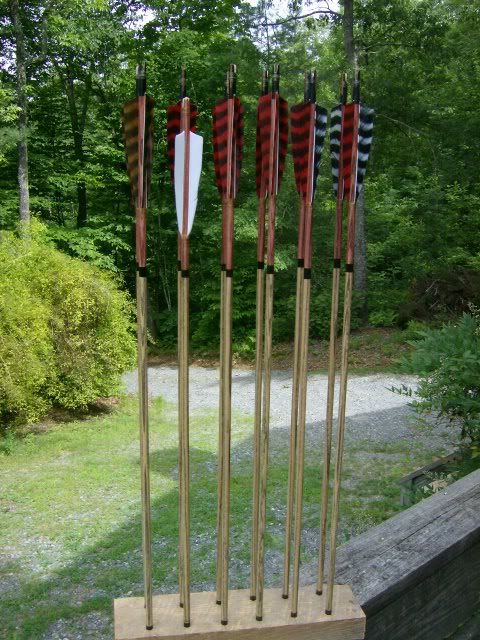
A full tapered shaft is not as spine sensative as straight doweled arrows plus the weight-forward aids in the arrows flight.
Here are a few ideas for target/field points for cane and hardwood shoots. For the cane a 16d common nail with a cone shaped blob of braising and for the hardwood shafts a small piece of steel fitted and glued into a slot cut in the tapered point end of the shaft with a sinew wrap to help secure it.
A duplex nail with the second head ground into a point is another option for cane shafts. I don't have any pics of the duplex nail heads.
